May 20, 2024 | 11:40 GMT +7
May 20, 2024 | 11:40 GMT +7
Hotline: 0913.378.918
May 20, 2024 | 11:40 GMT +7
Hotline: 0913.378.918
That was the beginning of the story of Mr. Le Van Dau (Tu Dau), owner of Nam Dau Production Facility, Long An A hamlet, Phu Thanh A commune, Tam Nong district, Dong Thap province, about an ancient rice variety - dragon blood rice, also commonly known as red rice.
From the People's Committee of Phu Thanh A commune, we followed Vice Chairman Huynh Thanh Hung, go through many small curves, turns and bridges, then stopped in front of the wide gate, having a sign "Nam Dau Production Facility" hung above. Inside is a house built in the old Southwestern style: wooden frame, high floor, tiled roof and large yard. Mr. Tu Dau, now 75 years old, went to the gate himself to welcome his guests with a Western farmer’s inherent openness and enthusiasm.
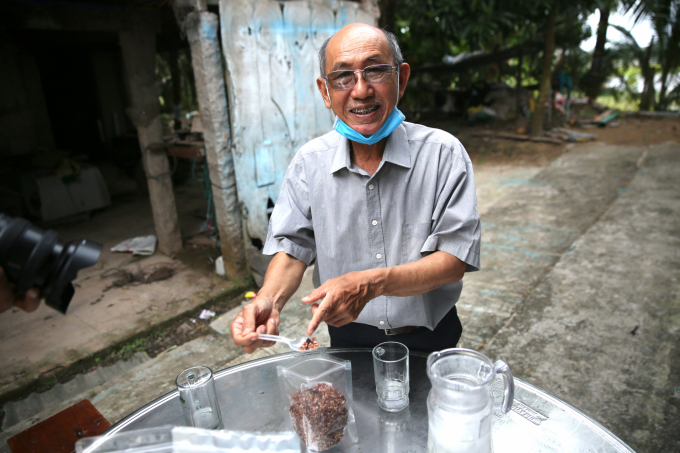
Mr. Tu Dau introducing one of his products - dried dragon blood rice. Photo: Phuc Lap.
After the initial greetings, we gradually became more excited from within, but still calmly listened to Mr. Tu Dau talking about his fateful encounter with dragon blood rice.
“I have this habit of frequently going out to visit the fields. I would miss them so much if I don't come out there for a long time. And every time I go to the fields, I watch them with great care.
That time, the plants looked ripe and close to ready, so I went out for a normal check to determine the harvest period and happened to see a strange rice bush. The root was bigger than the surrounding bushes. The grains had tails and a fuller form compared to normal rice. The husk has small purple stripes. I found it strange, so I marked down the location and circled it. When it was time to harvest, I cut the plant separately and brought it home. After peeling off the husk I could see the rice painted in a dark red color.
Later it came to me that it is red rice, also known as dragon blood rice - an ancient rice variety whose existence dates back to the long history of Dong Thap Muoi and Long Xuyen Quadrangle. Its value is out of the question, and I saw the need to separately preserve it as seed.
I replicated a field of this dragon blood rice variety in the next crop. After harvest, I milled the rice and have my whole family try it. Everyone's feeling was the same: it was very fragrant, rich and sweet in flavor. The more one chewed it, the sweeter it became. I could eat this rice without food. Its taste did not give me the bland feeling like when eating white rice.
One more coincidence was that not long after this discovery I happened to watch a health program on TV. The doctor talked about the use of red rice in limiting and preventing many diseases, including diabetes and cardiovascular diseases.
The news brought me overwhelming boy, so I started focusing on breeding dragon blood rice seeds right away."
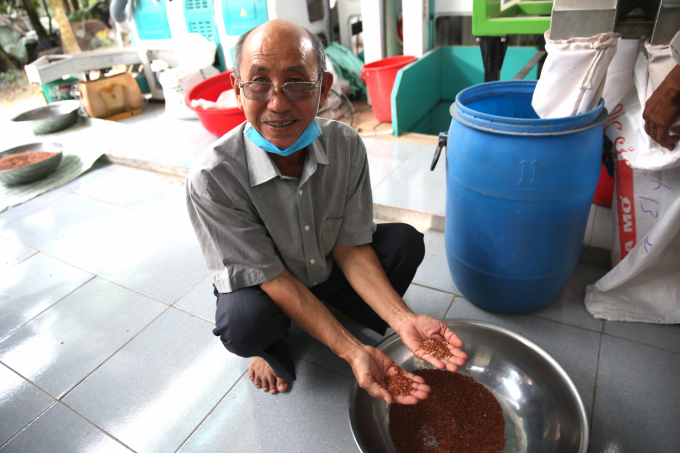
Sometimes dragon blood rice has a few grains of white rice mixed in. After color separation, all the white grains have been removed. Photo: Phuc Lap.
When the harvest for commercial dragon blood rice began, apart from keeping a portion for his family to eat, Mr. Tu Dau also introduced and sold dragon blood rice to neighbors and acquaintances in surrounding areas. Only after a while, good news spread far and wide, and many people had taken a liking for his dragon blood rice.
In 2018, Nam Dau Production Facility was officially established. The product "Nam Dau dragon blood rice" was registered as an exclusive trademark. Mr. Tu Dau then continued to research and make more products from red rice, including dried dragon blood rice, dragon blood rice flour, cereal mixed with dragon blood rice flour.
Mr. Tu Dau currently has 10 ha of field, available for 2 dragon blood rice crops each year. The winter-spring crop yields 7-8 tons of fresh rice per ha, while the summer-autumn crop has a lower yield, reaching approximately 5 tons/ha. Each year he collects 120 tons of dragon blood rice on average. He spends about one-third of the amount to process the rice into products.
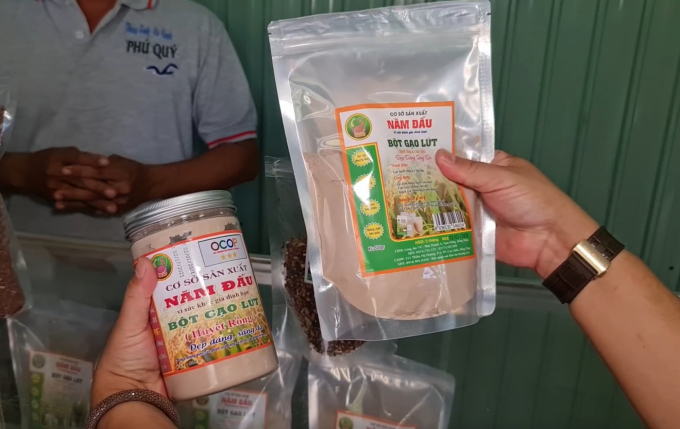
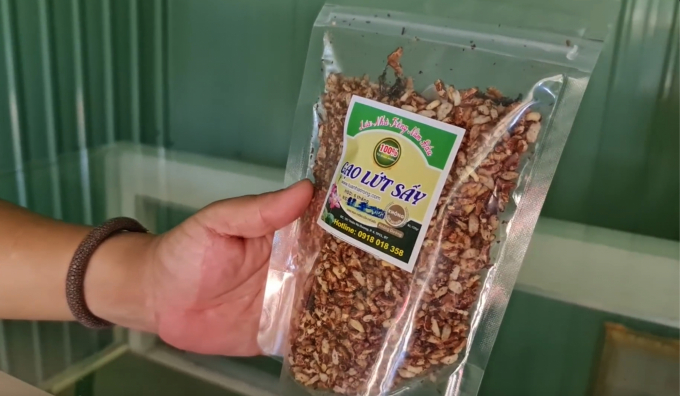
"If you want to improve the value of agro-products, you need to conduct deep processing" - Mr. Tu Dau. (In Photo: Nam Dau Production Facility’s dragon blood rice flour and dried rice products). Photo: Phuc Lap.
Pointing at a few rows of rice netting in his yard along with some small pots carrying rice on the house’s railing, I asked, "What type of rice that needs to be grown in pots and nets like this, Mr. Tu Dau?"
And with a tone brimmed with excitement, he replied: "It's a plan of mine to restore purebred dragon blood rice variety. The provincial Agricultural Extension Center advises me to do it, and I receive plenty of support from them as well. I don't have the conditions to grow the rice separately, and if I grow it in the field for a long time it will eventually degrade, hybridize with other varieties, and no longer maintain its original quality. I want to revive this precious rice variety. I want to protect it.”
Mr. Tu Dau shared that the restoration process is a work of marvel.
At first, the best rice grains must be selected and brought back with their heads and tails cut off. Only the middle part remains, which is approximately 30% of the seeds in one flower. The rice will be naturally dried and preserved. The seeds will be sewn into each small pot. When the rice plant is mature, the process will continue once again with the second sowing being the same as the previous. After three repeats, the final series of seeds will be collected and brought out to the field for sowing.
"I'm about to finish the seeding process. I will start to sow a field of purebred dragon blood rice in the next season," said Mr. Tu Dau.
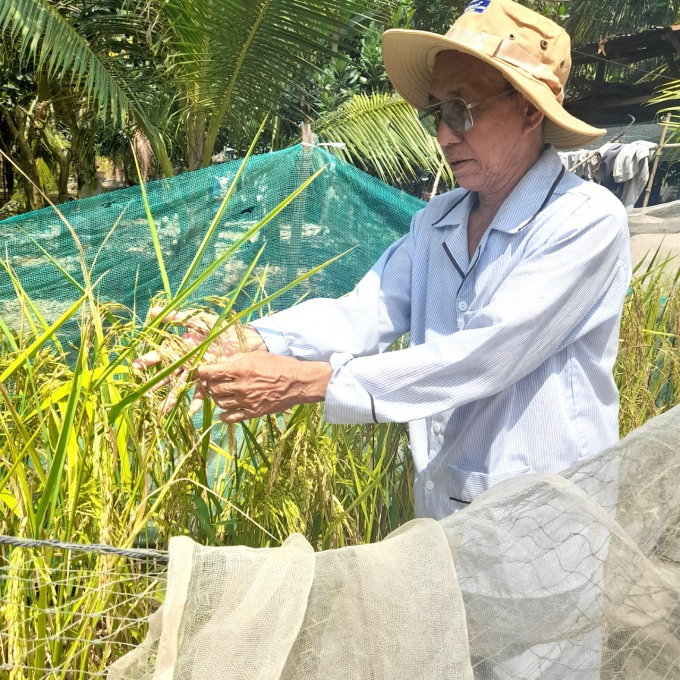
Mr. Tu Dau checking the purebred dragon blood rice seedlings in his yard. Photo: Phuc Lap.
Translated by Samuel Pham
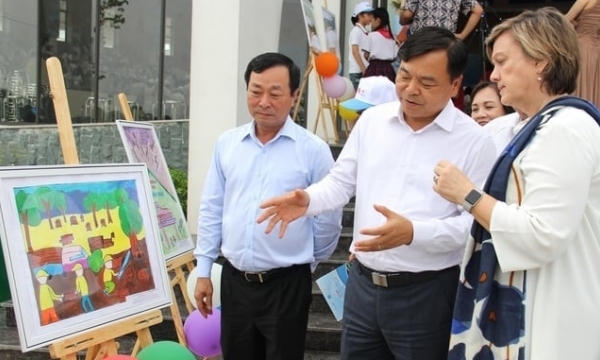
(VAN) According to Deputy Minister Nguyen Hoang Hiep, anticipatory action is a new approach in disaster management, with the aim of enhancing disaster prevention and preparedness.
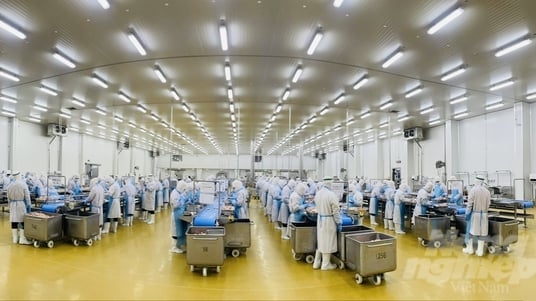
(VAN) The Ministry of Agriculture and Rural Development, in coordination with Tay Ninh Provincial People's Committee, organized a conference on May 18 to promote the export of animals and animal products.
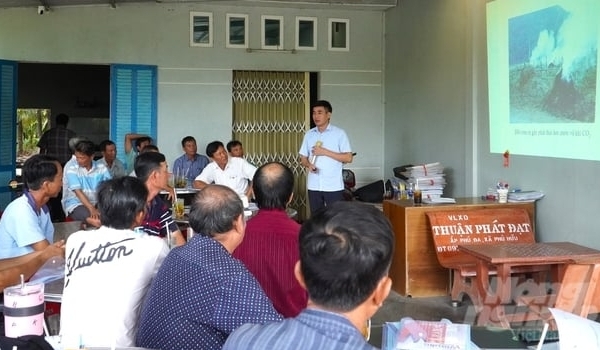
(VAN) From May 17-23, the National Agricultural Extension Center (NAEC) conducts training classes on the advanced rice farming process at 5 localities piloting for the 1 million ha of high-quality rice scheme.
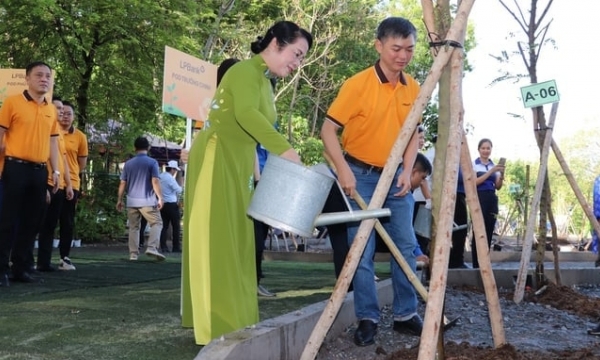
(VAN) Planting and expanding green spaces is a crucial effort to mitigate and adapt to the impacts of climate change, thereby creating a clean and livable environment.
/2024/05/17/5720-1-134847_782.jpg)
(VAN) EcoTraceTech - System for measuring CO2 and CH4 emissions from rice plants is the startup idea of a group of Can Tho University students.
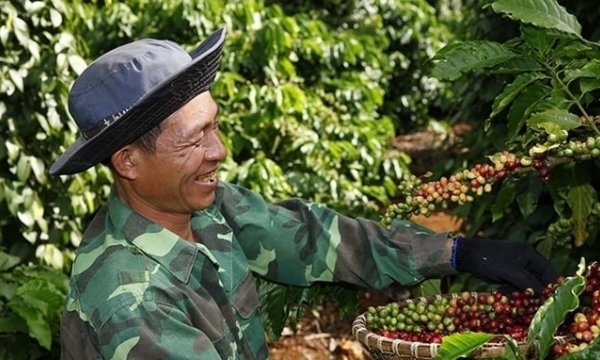
(VAN) The NESCAFÉ Plan by Nestlé Vietnam in the Central Highlands together with MARD aims to support coffee farmers in regenerative agriculture.
/2024/05/16/4437-1-223910_491.jpg)
(VAN) The Community Food Garden model is one of the outstanding activities and models of green transformation in the world as well as in Vietnam.